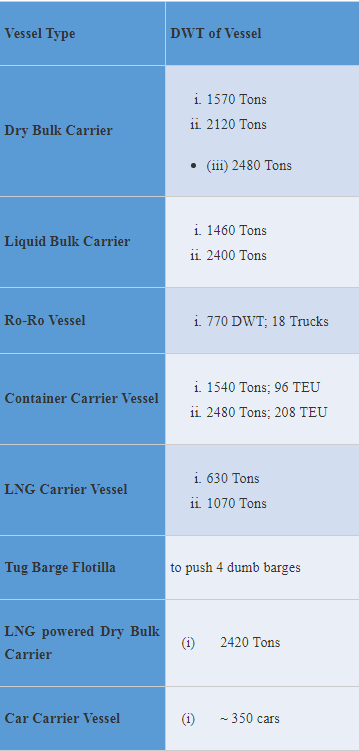The Inland Waterways Authority of India (IWAI) issued 13 standardised ship designs suitable for large barge haulage on river Ganga. This aims to serve as an enabler for domestic shipbuilding industry working on inland vessels and open possibilities for cargo and passenger movement on National Waterway-1.
With technical assistance and investment support of the World Bank, the Jal Marg Vikas Project (JMVP) is also expected to mark a milestone in the growth of the country’s Inland Water Transport (IWT) sector, as it will help overcome the unique navigation challenges river Ganga throws due to its complex river morphology, hydraulics, acute bends, shifting channels, meanders and current.
The specially designed vessels will navigate on low drafts with high carrying capacity and, at the same time, environment friendly. For the shipbuilding industry, the new designs will translate into a savings of Rs 30-50 lakhs in the building of a vessel.
The designs will remove ambiguity on the class and type of vessels that can sail on river Ganga with efficient manoeuvrability. They will help shipyards build vessels of standardised dimensions and capacity and make them available off the shelf besides developing the ‘sale and purchase’ market for inland vessels, in line with the Government’s ‘Make in India’ initiative. The designs will lead to reduced fuel costs and in turn lesser logistics costs.
In addition, these vessels will sail even in depths of about two metres carrying about 350 cars on a five deck car carrier. Some of the designs would enable movement of bulk cargo carriers with capacity of 2500 tonnes at three metres depth, thereby, removing almost 150 truckloads of pressure from the road or one full rail rake with the plying of just one such vessel.
IWAI had awarded the contract to M/s DST Germany, in September 2016. The new designs are a result of rigorous river studies conducted by a high-level technical team comprising of experts from IWAI, Indian Institute of Technology, Kharagpur and Indian Register of Shipping with periodical technical consultations with domain experts of the World Bank.
The standardization of IWT vessel design (efficient & low draft) has been done under the following categories:





























































